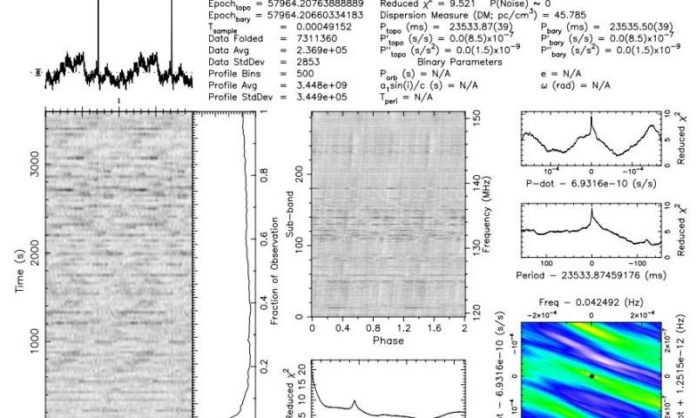An international team of astronomers has discovered a new radio pulsar as part of the LOFAR Tied-Array All-Sky Survey (LOTAAS). The newly detected object, designated PSR J0250+5854, turns out to be the slowest-spinning radio pulsar known to date.
Pulsars are normally recognized as short bursts of radio emission. Radio pulsars are usually very polarized, quickly turning neutron stars with a lighthouse beam emission that creates the pulsed emission.
Astronomers led by Chia Min Tan of the Jodrell Bank Centre for Astrophysics in Manchester, UK, has found a new radio pulsar with a relatively long spin period. The detection was made in July 2017, using the LOw-Frequency Array (LOFAR) radio telescope network located mainly in the Netherlands, as part of the LOTAAS survey. LOTAAS is an all-Northern-sky survey for pulsars and fast transients at a central observing frequency of 135 MHz.
Astronomers noted, “We subsequently detected pulsations from the pulsar in the interferometric images of the LOFAR Two-meter Sky Survey, allowing for sub-arcsecond localization.”
PSR J0250+5854 has the slowest spin period when compared to any other known magnetars and X-ray dim isolated neutron stars (XDINSs). The similarity of the rotational parameters of the newly detected pulsar to the XDINSs and magnetars indicates a possible connection between them.
The researchers also found that PSR J0250+5854 has a surface magnetic field strength of 26 trillion G, an age of 13.7 million years and spin-down luminosity of 82 octillion erg/s. According to the paper, these values suggest a dipolar magnetic field configuration in this pulsar.
researchers stressed the significance of their disclosure, taking note of that it has fundamentally extended the known scope of rotation-powered pulsar periods. They added that LOTAAS has the potential in finding all the more slow spinning pulsars like PSR J0250+5854 or even with slower turn periods.
The finding is reported in a paper published September 4 on arXiv.org.
